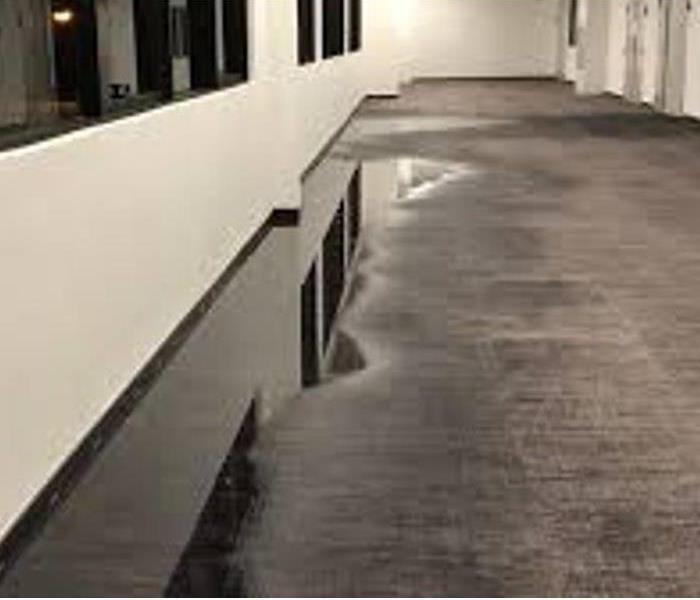Protect Your Business Against Water Damage
8/10/2020 (Permalink)
Businesses often protect themselves against smoke and fire damage by installing and maintaining smoke detectors and fire suppression systems. What many businesses don’t protect against is water damage. In fact, properties are 10 times more likely to suffer from water damage than they are from fire damage.
Water damage can come from a variety of sources, and while not all of them may be applicable in every situation, businesses should nonetheless have some sort of water detection as part of their business continuity plan.
Flood monitoring
Floods are the number one natural disaster here in the United States, and statistics show that floods and extreme weather events heavily affect the US.
Many businesses that aren’t located near large bodies of water tend to forget about flood damage, however, it’s important to remember that water damage from flooding isn’t restricted to just those in coastal areas. Overflowing rivers, extreme precipitation, water main breaks, internal plumbing failures and even melting snow can all cause water damage from flooding.
Unfortunately, sewer backup can cause flood damage as well. Sometimes this can be due to extreme weather situations where water damage can be anticipated, and sometimes it can be caused by local construction, decaying public infrastructure, or even tree roots. Having flood/water sensors in basements and below-ground areas can help warn and protect businesses against water damage from sewer backup as well as naturally occurring flood conditions.
Leak detection
Undetected leaks can cause just as much damage as a storm or flood. Leaks can come from a wide variety of sources, including:
- Leaky pipes
- Frozen pipes
- Leaky roofs
- Damaged windows
- Building foundation
- Malfunctioning sump pumps
- HVAC problems
Leaks aren’t always visible immediately, and can cause severe damage the longer they’re not detected. Even a small amount of water can promote unhealthy mold and mildew growth in the right conditions.
Leak detection can come in many forms, including spot sensors as well as cable-style sensors that can be placed on the boundaries of a room or facility. Leak detection can even come in the form of humidity monitoring; the more humid a facility becomes over a short period of time, the more likely it is due to undetected water.
Easily avoid water damage
Setting up proactive water and leak detection can help notify you immediately if the water is detected anywhere in your building or facility. While you can’t stop a storm from occurring or a pipe in your building from leaking, you can stop that damage from becoming too expensive by monitoring for water.
If your business is monitoring for smoke and fire as part of your business continuity plan, be sure to add water and leak detection as well. Helping to keep your facility and assets protected will help you avoid costly repairs and downtime over the long run.





 24/7 Emergency Service
24/7 Emergency Service
